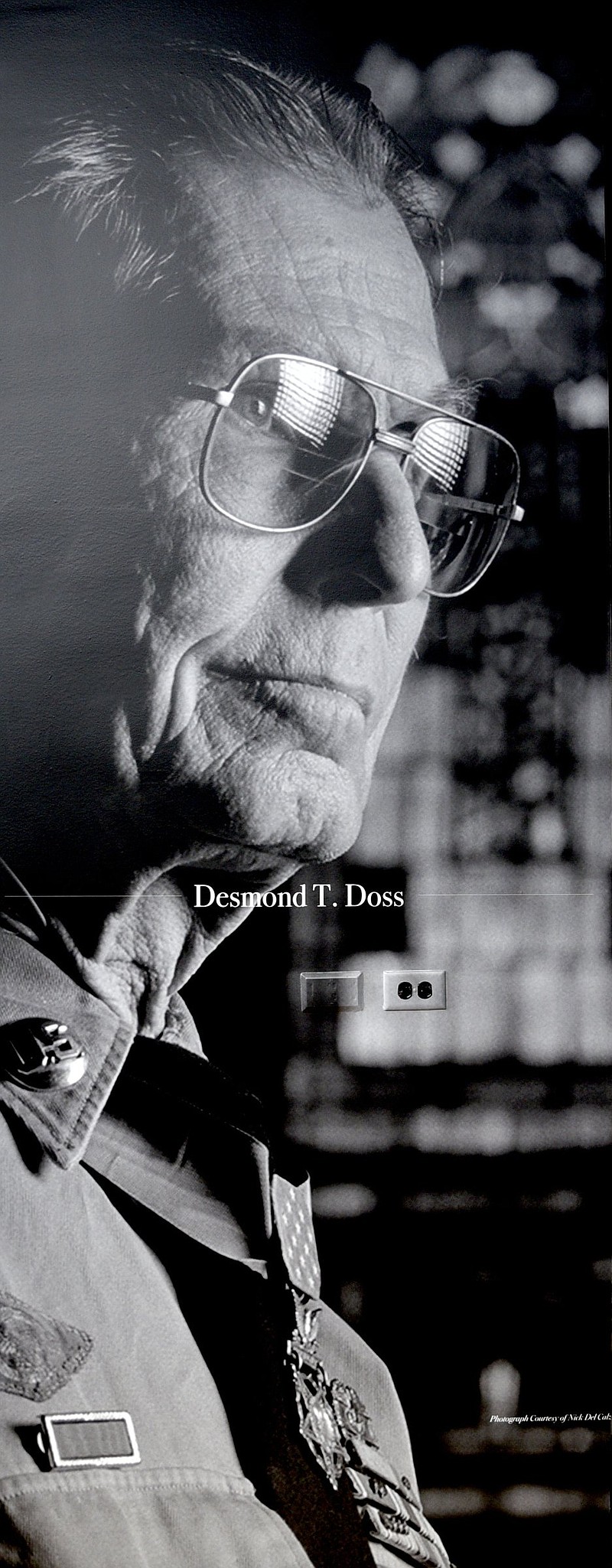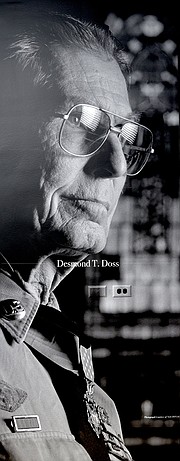Desmond Doss is different from many war heroes.
His peers who were also awarded with the Medal of Honor understood the violence of war and accepted what they felt was necessary to be victorious, to come out on the right side of a battle.
Doss understood the violence. That's why he rejected it.
Desmond Thomas Doss enlisted into the U.S. Army in April 1942. He could have taken a deferment because of his job at the Newport News naval shipyard, but he chose to go, even though he had sworn as a boy to never touch a gun after witnessing his father pull one on his uncle during an alcohol-influenced fight.
He also was deeply moved as a child by a framed illustration of the Ten Commandments that hung in his family's home. He vowed to follow all of them, including "Thou shalt not kill" and "Remember the Sabbath day, to keep it holy," which for Seventh-day Adventists is Saturday.
Refusing to carry a gun or to work on Saturdays did not endear him to his fellow soldiers or commanding officers. Part of his story is the abuse he took from his fellow soldiers.
Over a 12-hour period on April 30, 1945, the Lynchburg, Virginia-native U.S. Army medic ignored gunfire, exploding mortar shells, blood-soaked mud, bodies and even commands from his superiors as he returned to the battlefield on a ridge in Okinawa, Japan, to help any wounded men he could.
Over and over, the Seventh-day Adventist went back without giving a thought to his own well-being.
He stopped only long enough to offer up a prayer: "Lord, please help me get more and more, one more, until there was none left, and I'm the last one."
The story is a well-known one at this point, thanks in part to Mel Gibson's 2016 Academy Award-winning film "Hacksaw Ridge," starring Andrew Garfield as Doss.
On that fateful day in japan, Doss went back at least 75 times to where the heavy fighting was and carried or dragged wounded soldiers to the edge of the Maeda Escarpment, which was honeycombed with tunnels manned by Japanese soldiers, before lowering the injured soldiers by rope to help.
Doss' act of valor that day in Okinawa earned him the Medal of Honor on Oct. 12, 1945. He was put up for the honor by the same men who months earlier wanted him out of their company and out of the Army because they doubted his sincerity and questioned his toughness.
In presenting the award, President Harry S. Truman said, "You really deserve this. I consider this a greater honor than being president."
Doss was classified as a conscientious objector, though he called himself a conscientious cooperator. He wanted to serve and wanted to be as close to the actual fighting as he could, even if that meant being on the front lines unarmed.
Doss was nearly blown up by a grenade, which left him with 17 pieces of shrapnel in his body, near the escarpment almost a month after his heroic act, and was later shot by a sniper. The wounds, as well as tuberculosis contracted while on Okinawa, left him 90 percent disabled.
He was treated with antibiotics, but an overdose left him deaf for years, though he was later fitted with a cochlear implant that restored some hearing.
Doss was discharged in 1951 and moved with his wife, Dorothy, to a small farm in Rising Fawn, Ga., where they grew and sold fruits and vegetables to make a living. She died in 1991, and Doss married Frances Duman in 1993.
Doss died in 2006 and is buried in Chattanooga National Cemetery.
Staff Writer Barry Courter contributed to this article.

